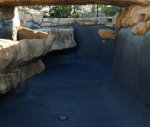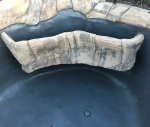I go well being that as well. There isn't enough demand to limit yourself to a small area.
Plaster and Aquabright Comparison
- Thread starter bdavis466
- Start date
You are using an out of date browser. It may not display this or other websites correctly.
You should upgrade or use an alternative browser.
You should upgrade or use an alternative browser.
Amy
I will ask, but in their website contact us template my county isn't even shown.
I will ask, but in their website contact us template my county isn't even shown.
- May 23, 2015
- 24,411
- Pool Size
- 16000
- Surface
- Plaster
- Chlorine
- Salt Water Generator
- SWG Type
- Pentair Intellichlor IC-60
I go well being that as well. There isn't enough demand to limit yourself to a small area.
The Tucson market is all yours....just get an AZ ROC License and you'll have to open a satellite office here to keep up....
- Jun 18, 2015
- 712
- Pool Size
- 11000
- Surface
- Plaster
- Chlorine
- Salt Water Generator
- SWG Type
- Pentair Intellichlor IC-40
Amy
I will ask, but in their website contact us template my county isn't even shown.
Call EcoFinish directly!
manoweb
0
I have read a lot about this finish and I really like the concept.
However, I have to say that... at first I did not even consider it because of the name "eco-finish" like if it was a cheap, economical paint that made me think about those dirty swimming pools in cheap LA motels. Later I understood it's an higher end product, and "eco" was in the "ecological" sense, but that put me off too because typically "ecological" materials compromise their properties and performance just to satisfy some "perceived" dangerous chemical. I do not mind hazardous chemicals gassing off during the application and curing proces (well, to a reasonable extent
 ) if the result is an inert and very stable material that lasts decades. However on the ecofinish website:
) if the result is an inert and very stable material that lasts decades. However on the ecofinish website:
Anybody knows this older "silky white rubber-based paint finish" that used to be normal up to the late 80's? What were the "crucial ingredients" that were banned by the government? What are the new ones that are "ecological" now but restore performance - anybody knows?
However, I have to say that... at first I did not even consider it because of the name "eco-finish" like if it was a cheap, economical paint that made me think about those dirty swimming pools in cheap LA motels. Later I understood it's an higher end product, and "eco" was in the "ecological" sense, but that put me off too because typically "ecological" materials compromise their properties and performance just to satisfy some "perceived" dangerous chemical. I do not mind hazardous chemicals gassing off during the application and curing proces (well, to a reasonable extent
For decades swimming pools were coated in a silky white rubber-based paint finish. In addition to the smooth texture and bright white look, this type of paint was known for its durability against stains and imperfections. During the late 1980’s, government regulations banned some of the most crucial ingredients that made this product maintenance free. New paints were no longer free of imperfections. Blistering, chipping, peeling, and fading began to appear in as little as six months.
This forced swimming pool builders in many regions to switch to plaster finishes. Plaster has its own set of issues, in the form of a long and complicated start-up process (Hot-Start), as well as staining, shrinking, and cracking problems. aquaBRIGHT™ was scientifically developed to present a solution to these aquatic finish problems. The long-lasting thermo-polymer finish, aquaBRIGHT™ is the wave of the future.
Anybody knows this older "silky white rubber-based paint finish" that used to be normal up to the late 80's? What were the "crucial ingredients" that were banned by the government? What are the new ones that are "ecological" now but restore performance - anybody knows?
- May 23, 2015
- 24,411
- Pool Size
- 16000
- Surface
- Plaster
- Chlorine
- Salt Water Generator
- SWG Type
- Pentair Intellichlor IC-60
AquaBright is a two coating, polymeric system that binds to the plaster surface very effectively. The first layer is a roller applied epoxy paint. This epoxy acts as an adhesion layer between the cementitious plaster surface and the thermoset polymer layer. If you were to flame-spray the aquaBright directly onto the plaster, it would delmaine pretty quickly from thermal expansion differences. With the epoxy layer present, the thermoset polymer can be applied evenly and easily expand and contract as needed. The aquaBright layer is a flame-sprayed thermoset polymer composed mostly of high density polyethylene with some additional cross-linking agents as well as colorants and UV stabilizers.
As for what was used in the past.....who knows. Most of those old, rubber-based paints were dispersed in some very nasty solvents, like trichloroethylene, which are incredibly carcinogenic. Plaster products used to contain asbestos fibers in them and many old-school plasterers swear that the asbestos greatly improved the mechanical strength of the plaster material....however, no one wants to pay for a full-on HAZMAT environmental cleanup job when they chipout their pool plaster
As for what was used in the past.....who knows. Most of those old, rubber-based paints were dispersed in some very nasty solvents, like trichloroethylene, which are incredibly carcinogenic. Plaster products used to contain asbestos fibers in them and many old-school plasterers swear that the asbestos greatly improved the mechanical strength of the plaster material....however, no one wants to pay for a full-on HAZMAT environmental cleanup job when they chipout their pool plaster
I have read a lot about this finish and I really like the concept.
However, I have to say that... at first I did not even consider it because of the name "eco-finish" like if it was a cheap, economical paint that made me think about those dirty swimming pools in cheap LA motels. Later I understood it's an higher end product, and "eco" was in the "ecological" sense, but that put me off too because typically "ecological" materials compromise their properties and performance just to satisfy some "perceived" dangerous chemical. I do not mind hazardous chemicals gassing off during the application and curing proces (well, to a reasonable extent) if the result is an inert and very stable material that lasts decades. However on the ecofinish website:
Anybody knows this older "silky white rubber-based paint finish" that used to be normal up to the late 80's? What were the "crucial ingredients" that were banned by the government? What are the new ones that are "ecological" now but restore performance - anybody knows?
I would agree that the names and marketing strategy for these products is a little less a than terrible. Unfortunately for you, there are no installers remotely close to you so this finish is probably not going to be an option for your build...quite unfortunate because this really is a good product


- May 23, 2015
- 24,411
- Pool Size
- 16000
- Surface
- Plaster
- Chlorine
- Salt Water Generator
- SWG Type
- Pentair Intellichlor IC-60
I would agree that the names and marketing strategy for these products is a little less a than terrible. Unfortunately for you, there are no installers remotely close to you so this finish is probably not going to be an option for your build...quite unfortunate because this really is a good product
Never fear! I'm working on a process that uses recycled plastic grocery bags, all of my reserve Aquanet hairspray from the 80's (which is pretty sizable), and a BIC lighter.....I think I'm probably...ohhh...maybe.....hmmm...a solid 7-10 years from making it a DIY reality

manoweb
0
Brian are you really saying there is no AquaBright installer in the SF Bay Area? One of the most technologically advanced areas of the whole world...???
Another question, now I'm curious.
My understanding is that once plaster is applied, you have to fill the pool soon right after otherwise it will shrink and crack. This might be the wrong reason, but I have often read that pools have to be filled right away and cannot be left empty even after years (please correct me if I'm wrong here)
However if you apply epoxy and aquabright, plaster will remain dry. Why won't it crack in this context?
- - - Updated - - -
Unfortunately that won't work, they have been banned by most counties in California, and you would not be able to sell your invention here if it uses evil plastic bags.
Another question, now I'm curious.
My understanding is that once plaster is applied, you have to fill the pool soon right after otherwise it will shrink and crack. This might be the wrong reason, but I have often read that pools have to be filled right away and cannot be left empty even after years (please correct me if I'm wrong here)
However if you apply epoxy and aquabright, plaster will remain dry. Why won't it crack in this context?
- - - Updated - - -
Never fear! I'm working on a process that uses recycled plastic grocery bags
Unfortunately that won't work, they have been banned by most counties in California, and you would not be able to sell your invention here if it uses evil plastic bags.
Brian are you really saying there is no AquaBright installer in the SF Bay Area? One of the most technologically advanced areas of the whole world...???
Another question, now I'm curious.
My understanding is that once plaster is applied, you have to fill the pool soon right after otherwise it will shrink and crack. This might be the wrong reason, but I have often read that pools have to be filled right away and cannot be left empty even after years (please correct me if I'm wrong here)
However if you apply epoxy and aquabright, plaster will remain dry. Why won't it crack in this context?
Yep, no installers in the bay area unless something has recently changed. You'll have to contact EcoFinish to know for sure since they took down their installer map.
You are correct, plaster pools need to get filled immediately after the pool is finished being troweled. This isn't the case with an AquaBright surface since the 2 epoxy coats penetrate deep into the plaster and seal off the surface keeping the plaster from further drying out and shrinking. The AquaBright material is also very flexible so it can handle the minor movement the plaster may have.
Thread Status
Hello , This thread has been inactive for over 60 days. New postings here are unlikely to be seen or responded to by other members. For better visibility, consider Starting A New Thread.

